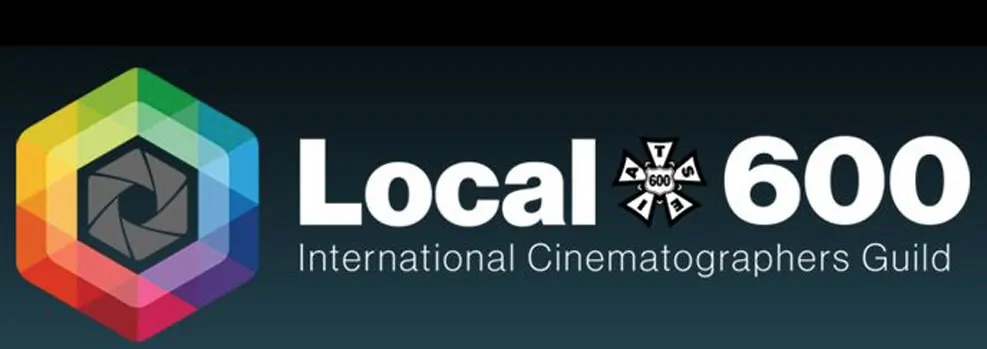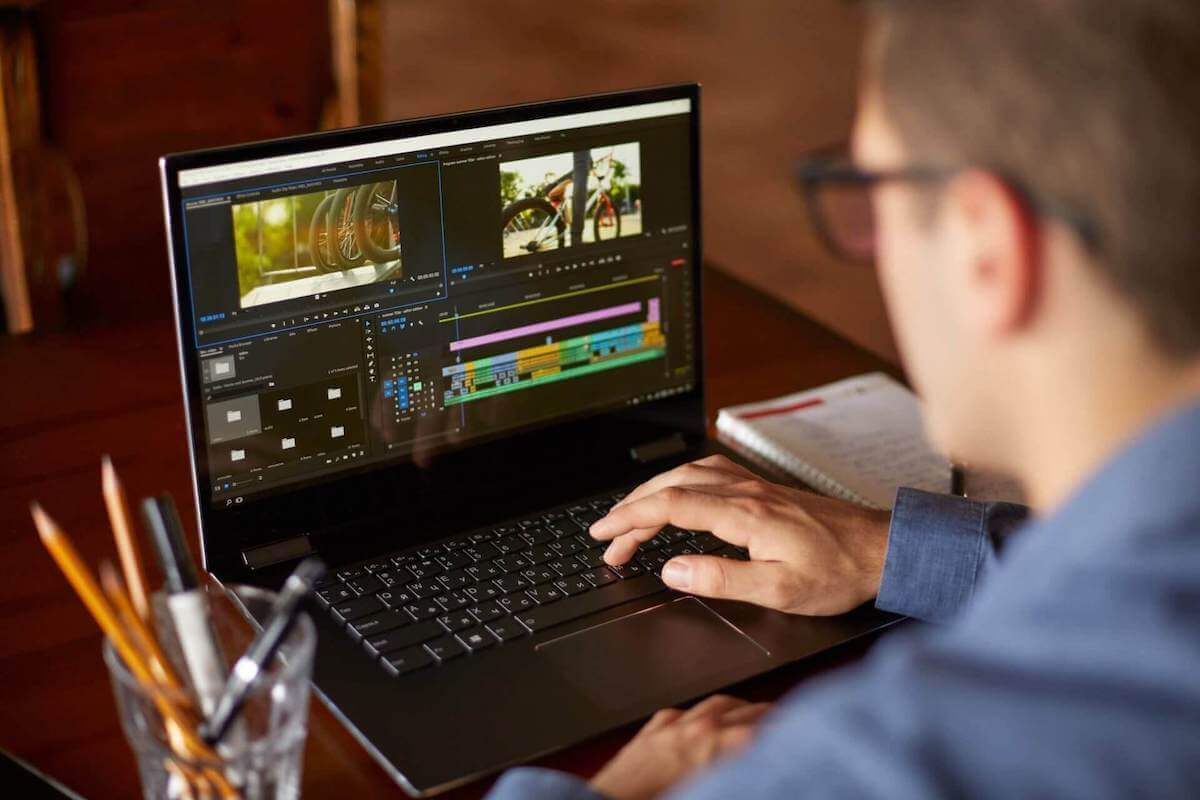The role of the DIT is one of the more mysterious roles on a film set. This is primarily due to the fact that there are numerous duties that fall onto a DIT. In today’s digital world, technology is advancing at an incredible rate. And the film industry is no exception.
DIT’s are becoming an increasingly important role to bridge the gap between creative minds and the advanced technology being introduced to the industry. For this reason, DIT’s must be an excellent technician, creative, and communicator. In this article, we’ll dive into the reasons why these skills are crucial and how one might become a DIT.
What is DIT?
DIT definition
When most people think of the role of the DIT, they simply think they are responsible for transferring footage from memory cards. While this is an important responsibility, it is only one of many important duties. To better understand the DIT responsibilities, let’s take a quick look at the DIT definition. For a complete guide to the major roles in film production, check out our ultimate guide to film crew positions.
DIT DEFINITION
What is a DIT?
A DIT, or digital imaging technician, has three primary responsibilities: data wrangling and protection, assisting the DP, and dailies. At large, DIT’s have many responsibilities as the digital format becomes increasingly advanced and more complicated.
They are a unique member of the camera department with larger responsibilities such as organizing footage, on-set color correction, and signal integrity. The DIT is commonly thought of as the liaison between the production and Post-Production teams.
DIT Responsibilities:
- Assist the DP and camera department
- Data wrangling and protection
- Putting dailies together
DIT job description
What does a DIT do on set?
There are so many things that a DIT is responsible for. And as technology keeps advancing, the list keeps growing. However, there are a few fundamental duties the DIT is responsible for no matter what.
1. Assisting the DP and Camera Department
One of the primary duties of a digital imaging technician is to work closely with the cinematographer or director of photography. The DIT works closely with the DP to ensure the digital image manipulations that contribute to the DP’s vision are met. These image manipulations are things like camera settings, resolution, aspect ratio, codecs, LUTs, frame rates and more. In this era where many of the best cinematographers learned by shooting on film stock, the DIT helps bring their vision to life given the digital format.
DIT’s may also assist the camera crew set-up video village and provide a temporary on-set color to the monitor’s video feed.
What Does A Digital Imaging Technician Do On Set? • DIT process
2. Establish the workflow between production and post-production
As the liaison between Production and Post-Production teams, the DIT must establish an efficient and effective workflow for the Post-Production process. This workflow primarily focuses on efficient and secure hand off of footage from the camera department to DIT to an editor or assistant editor. The workflow established must be agreed upon by both teams so that there are no hiccups in the process and no footage is lost, corrupted, or compromised.
3. Data Wrangling and Protection
One of the most crucial duties of the DIT process is data wrangling and data protection. Once a card gets filled, the camera department hands off the data to the DIT. One of the main DIT responsibilities is transferring the footage to various drives directly from the source media.
This means that they copy the data to drive A from the source media and to drive B again from the source media. Copying data from the source media to drive A and then copying the media from drive A to drive B is not a redundant archival drive.
A rule of thumb is that the data must be in three separate places (drives). Once the data is uploaded, the DIT scrubs through the footage and data information to ensure all copies are identical and are not compromised.
Each drive is then handed off to separate crew members. This is important because if something happens to one crew member or one drive, the others are secured elsewhere.
4. Dailies
Dailies in film are the raw, unedited footage shot during that day. Once the DIT has the camera and sound notes, they can make “selects” and start putting together dailies.
To have these ready for review for the director, DP, and producer, the DIT must quickly sync sound and apply basic, temporary color correction to the footage. This process can be made easier and quicker with programs like Pomfort. Check out the software in the video below.
Pomfort Makes Dailies Workflow Easy for DIT film production
There is a laundry list of DIT responsibilities. But in today’s digital filmmaking world, they are one of the most crucial roles on set. They also have the unique hybrid role of being part camera crew and part Post-Production. If the role of DIT sounds interesting to you let’s talk about a few ways to become one.
Related Posts
DIT Jobs
How to become a DIT on set
Like any other filmmaking role, there is no singular path to becoming a DIT. But here are a few tips on how to get started and how to find work as a digital imaging technician.
1. Live where the work is
This is a drum that is beaten often, but rightfully so. For any on-set filmmaking role, you’ll need to go where the work is. And right now the work is primarily in Los Angeles. Making the move to LA will open up doors and create new opportunities to work as a DIT.
However, this doesn't mean that it won’t be competitive. This is where the next few tips come in.
2. Join a union
Joining a camera union can be one of the best steps toward getting work. Camera unions such as the Local 600 not only provide resources on job opportunities, but they can help ensure that fair wages are met. This step, however, is not as immediate for those just starting in the industry as you may not have the minimum work requirements for eligibility.

Local 600 Camera Union for DIT film crew roles
Related Posts
3. Know your digital equipment
If you know that you want to eventually work as a DIT, it is imperative to understand the digital equipment you will be handling. This entails having a comprehensive understanding of various digital cameras and digital equipment involved in data storage and protection. To get an idea of how much equipment a DIT uses, check out this video of a real DIT workflow walkthrough on set.
DIT on set Walkthrough: What Is A Digital Imaging Technician?
DIT’s must also have an understanding of necessary software and programs they will be using such as Premiere Pro, R3D Data Manager, Al3xa Data Manager, and ShotPut Pro.
4. Take a class or internship
If the previous tip intimidated you, do not fret. There are various online and in-person educational resources that will help you learn more about these equipment and filmmaking softwares. Educating yourself early is important. When it comes to the role of the DIT, the stakes of doing your job correctly are extremely high as crucial data is in your hands.
Ways to break into the camera department • DIT Jobs
If you have the time and resources, pursuing a digital imaging technology associate's degree may be a good idea. Finding internships in which you can learn more about becoming a Digital Imaging Technician is another way to learn more.
5. Work other filmmaking roles
Many DITs start their careers by working as other roles either on set or in Post-Production. Since a DIT has a foot in both Production and Post-Production, there are multiple entry roles.
Working as a camera operator or assistant camera are viable entry positions through the camera department. In Post-Production, you may work as an assistant editor or editor and become a DIT.
6. Network
Lastly, much of your work will come from previous employers. Grow your network and develop relationships with cinematographers, editors, and production managers that you work with. Provide value to every set you step onto and people will think of you when an opportunity opens up on another project.
Digital imaging technician day rate
An important question — DIT salary
According to the U.S. Bureau of Labor Statistics, Digital Imaging Technicians made an average salary of $72,520 in 2018. Like most filmmaking jobs, DIT’s primarily gig to gig as a freelancer. An average Digital Imaging Technician day rate can range from $250 — $750. Productions typically will also pay for the equipment rental of all the gear you will use as well.
Keep in mind, smaller productions will pay on the lower end of $100 — $200 a day. Getting to the wage of average DITs will take experience and probably joining a union.
Related Posts
Looking for DIT jobs
How to find DIT jobs
Once you get the ball rolling and develop a reputation, most DIT jobs will come from previous employers or recommended within your network.
However, if you’re just starting out, you’ll want to utilize online resources like Production Beast, Indeed, StaffMeUp, or even the film crew job section on BackStage. Like we touched on earlier, working as another role in the camera department will help you gain eligibility for camera unions like the Local 600. Once you’re a part of the union, you can utilize their resources to find roles as a DIT.
UP NEXT
Discover more filmmaking roles
DIT’s are a unique filmmaking role because they have a foot in both the camera department and Post-Production. To continue through our series of the various filmmaking roles and positions, you can explore similar jobs like cinematographer, camera operator, or editor. Or you can jump over to our Film Crew Index to browse the entire range of filmmaking roles. Understanding what everyone’s role on a film set is will help make you a better overall filmmaker and a more efficient crew member.
Up Next: Explore more crew positions →
Showcase your vision with elegant shot lists and storyboards.
Create robust and customizable shot lists. Upload images to make storyboards and slideshows.
